Alberta
Canadian grain storage arrived just in time for Ukrainian farmer
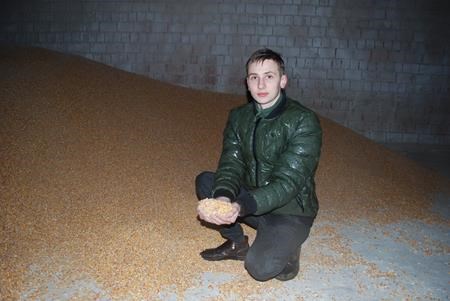
CHERNEVE, LVIV OBLAST, UKRAINE — Oleh His marches with pride and purpose in rain-soaked mud through row upon row of large white polyethylene bags, each stamped with a Canadian logo and filled to bursting with this year’s harvest of grain.
The 24-year-old grain farmer with a slight build, fair hair and braces is also a volunteer with the Ukrainian military. He splits his time between running the family farm and sourcing money and supplies for the front.
When Russia invaded Ukraine last year, His knew right away he would have a problem.
“The logistical connection of agricultural products with the rest of the world has broken,” His said in Ukrainian through a translator at his farm, AgroKorovai, just 17 kilometres from the border with Poland.
Despite the relatively safe location, the war has devastated local farms in the region.
Usual trade routes through the Black Sea to Africa and Asia were cut off. The cost of diesel and fertilizer used to grow and harvest crops grew substantially.
The port blockages caused a food crisis in some parts of Africa. Without large warehouses to keep the harvest from rotting, His said some farms had to sell their grain at a loss and went bankrupt.
In December, after farmers delayed harvesting their crops for as long as they possibly could, the UN Food and Agriculture Organization (FAO) distributed 26,000 grain sleeves donated by Canada and Japan all over Ukraine.
“We thought they wouldn’t arrive in time but everything was fine,” said His, who received 10 sleeves from Canada and also bought some of his own, just in case.
The sleeves are long white plastic bags that span the lengths of the field. They protect grain from the elements until it can be sold and exported.
“We sleeved it and freed up our hands to wait and get it out smoothly. This saved us a lot of money,” His said.
The mild winter was on their side, as far as timing was concerned, said Pierre Vauthier, head of the FAO control office in Ukraine.
“Some of it arrived very late and yes, of course, they’re going to use (the sleeves) next year, but it’s very, very marginal,” Vauthier said in an online interview from Kyiv.
Many farms closer to the front line have seen what little storage capacity they had blown up or destroyed by enemy shelling and landmines, said Vauthier, and about 15 per cent of the grain storage capacity in the country is gone.
“The impact is quite big,” he said.
The news prompted Canada to partner with Japan to prevent Ukrainian grain from going to waste with a $52-million investment into the sleeves.
The project was announced last June, when Prime Minister Justin Trudeau met other G7 leaders in Germany to discuss measures to halt the famine caused by the Russian invasion.
Altogether the grain storage should prevent more than five million tonnes of grain from going to waste, but the challenges are unlikely to abate as Ukraine enters its second year of war.
A deal struck in the summer between Russia and Ukraine to open up ports in Odesa to allow grain exports to be transported through the Black Sea has improved the situation, but it’s slow and inefficient, Vauthier said.
It is up for renewal in March, and Vauthier said reaching another deal is essential.
“I hope that they’re going to come to an agreement, they’re going to agree to continue to do what is absolutely critical for the country and for food security worldwide,” he said.
He expects exports to be squeezed again in 2023, and said more grain sleeves might be needed to preserve the grain harvest. Smaller farms will need mobile grain storage units, which look like plastic circus tents, for warehousing grain.
The FAO is also working to deliver seeds and generators to farms near the front line to keep up production.
His said he hopes Canada and other countries will donate more sleeves, but with the profit he was able to salvage this year he plans to buy some of his own next year.
“It is much more profitable than building a warehouse,” he said. “Building materials have become more expensive, so building warehouses is more costly than before. We built warehouses for 5,000 tons last year, which was expensive, and now it would be even more costly.”
The war has also spurred him to look for new markets for his grain, rather than selling directly to traders in Odesa.
He now has a truck that his farm loads up with grain from the sleeves and delivers it directly to Poland.
“Any crisis is an opportunity,” His said.
“Even in such a crisis, we do not give up but start looking for opportunities.”
This report by The Canadian Press was first published Feb. 23, 2023.
Laura Osman, The Canadian Press
Alberta
Calgary taxpayers forced to pay for art project that telephones the Bow River

From the Canadian Taxpayers Federation
The Canadian Taxpayers Federation is calling on the City of Calgary to scrap the Calgary Arts Development Authority after it spent $65,000 on a telephone line to the Bow River.
“If someone wants to listen to a river, they can go sit next to one, but the City of Calgary should not force taxpayers to pay for this,” said Kris Sims, CTF Alberta Director. “If phoning a river floats your boat, you do you, but don’t force your neighbour to pay for your art choices.”
The City of Calgary spent $65,194 of taxpayers’ money for an art project dubbed “Reconnecting to the Bow” to set up a telephone line so people could call the Bow River and listen to the sound of water.
The project is running between September 2024 and December 2025, according to documents obtained by the CTF.
The art installation is a rerun of a previous version set up back in 2014.
Emails obtained by the CTF show the bureaucrats responsible for the newest version of the project wanted a new local 403 area code phone number instead of an 1-855 number to “give the authority back to the Bow,” because “the original number highlighted a proprietary and commercial relationship with the river.”
Further correspondence obtained by the CTF shows the city did not want its logo included in the displays, stating the “City of Calgary (does NOT want to have its logo on the artworks or advertisements).”
Taxpayers pay about $19 million per year for the Calgary Arts Development Authority. That’s equivalent to the total property tax bill for about 7,000 households.
Calgary bureaucrats also expressed concern the project “may not be received well, perceived as a waste of money or simply foolish.”
“That city hall employee was pointing out the obvious: This is a foolish waste of taxpayers’ money and this slush fund should be scrapped,” said Sims. “Artists should work with willing donors for their projects instead of mooching off city hall and forcing taxpayers to pay for it.”
Alberta
Second body recovered from Bow Glacier Falls rockslide. Police identify first victim
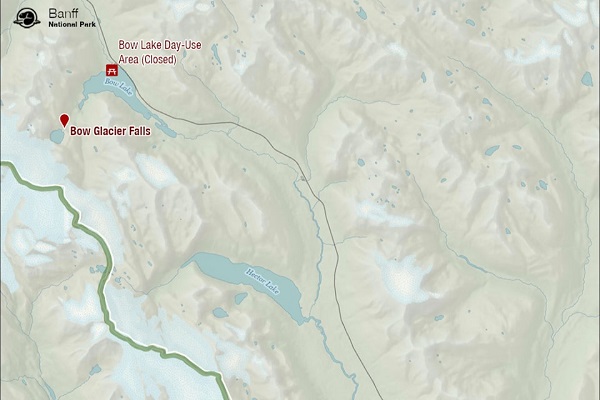
News release from the RCMP and Parks Canada
Parks Canada and RCMP continue to respond to a rockslide at Bow Glacier Falls near Bow Lake, approximately 37 km north of Lake Louise in Banff National Park. Search and rescue operations resumed at 6:30 am on June 20, 2025.
RCMP confirm that the individual located deceased at the scene on June 19, 2025, was a 70-year-old female resident of Calgary, Alberta. RCMP also confirm that a second deceased individual was recovered on the morning of June 20, 2025. RCMP is notifying their next of kin and no further information is available at this time. Three individuals transported to hospital by STARS and ground ambulance on June 19, 2025 were all in stable condition at last report.
At this time, there are no additional persons reported missing and no additional unidentified vehicles at the trailhead located at Bow Lake.
Parks Canada and RCMP extend our deepest condolences to the families and friends of the two individuals who lost their lives, our hearts are with them. Our thoughts also remain with those in hospital and we hope for their full recovery.
In a continued effort to complete a thorough assessment, Parks Canada visitor safety teams continue work today with support from a geotechnical engineer with Canada Task Force One (CAN-TF1 Vancouver), as well as members of Canada Task Force Two (CAN-TF2 Calgary) and their partners in the Calgary Police Service.
The safety of first responders and park visitors is our top priority.
Bow Lake and the trail to Bow Hut have reopened. Bow Glacier Falls remains closed to all visitors. The NOTAM (no-fly zone) remains in place to ensure public safety and for park operations. Parks Canada and RCMP thank visitors for giving teams space to work safely.
The Icefields Parkway (Highway 93N) remains open with potential intermittent, short-term traffic stoppages in the vicinity of the incident. Heavy precipitation including snow is occurring on the Icefields Parkway. Please check the weather forecast and Alberta 511 before travelling.
Banff National Park remains open and safe to visit.
Updates will be provided as more information is available.
BACKGROUND:
RCMP AND PARKS CANADA – JOINT STATEMENT #2
June 20, 2025 8:10 AM
Lake Louise, Alberta – On June 19, 2025, at 1 pm Parks Canada received a report of a serious rockfall at Bow Glacier Falls located west of the Icefields Parkway (Highway 93N) near Bow Lake, which is approximately 37 km north of Lake Louise in Banff National Park.
Parks Canada wardens and RCMP remained on site overnight. Parks Canada visitor safety teams will continue working today with support from Canada Task Force Two (CAN-TF2 Calgary), a national disaster response team.
CAN-TF2 is conducting infrared flights, through their partners in the Calgary Police Service, in a continued effort to complete a thorough assessment. A Canada Task Force One (CAN-TF1 Vancouver) geotechnical engineer will conduct a slope stability assessment. The safety of first responders and park visitors is our top priority.
As reported yesterday, one person was located deceased at the location on June 19th. RCMP are working to notify next of kin. No further information about this individual is available.
Bow Lake remains closed to all visitors. A NOTAM (no-fly zone) remains in place to ensure public safety and for park operations. Parks Canada and RCMP thank visitors for giving teams space to work safely.
Alpine Club of Canada guests staying at Bow Hut are safe. Visitors staying at Bow Hut will be able to exit on schedule via the usual route, which is unaffected and safe to travel.
The Icefields Parkway (Highway 93N) remains open with potential intermittent, short-term traffic stoppages in the vicinity of the incident. Heavy precipitation including snow occurring on the Icefields Parkway. Please check the weather forecast and Alberta 511 before travelling.
Banff National Park remains open and safe to visit.
-

 espionage2 days ago
espionage2 days agoFrom Sidewinder to P.E.I.: Are Canada’s Political Elites Benefiting from Beijing’s Real Estate Reach?
-

 Bruce Dowbiggin1 day ago
Bruce Dowbiggin1 day agoFUBAR: How Trudeau & Trump Rewrote This Century’s Political Handbook
-

 Alberta2 days ago
Alberta2 days agoAlberta’s carbon diet – how to lose megatonnes in just three short decades
-

 Business1 day ago
Business1 day agoSenator wants to torpedo Canada’s oil and gas industry
-
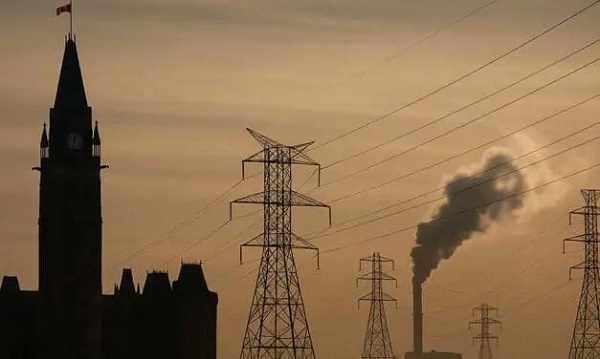
 Energy2 days ago
Energy2 days agoWho put the energy illiterate in charge?
-
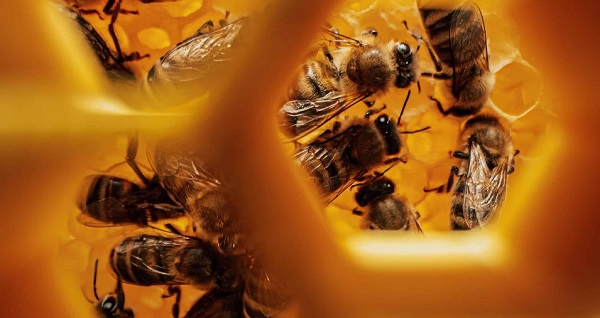
 Agriculture2 days ago
Agriculture2 days agoUnstung Heroes: Canada’s Honey Bees are not Disappearing – They’re Thriving
-

 espionage2 days ago
espionage2 days agoFBI Buried ‘Warning’ Intel on CCP Plot to Elect Biden Using TikTok, Fake IDs, CCP Sympathizers and PRC Students—Grassley Probes Withdrawal
-
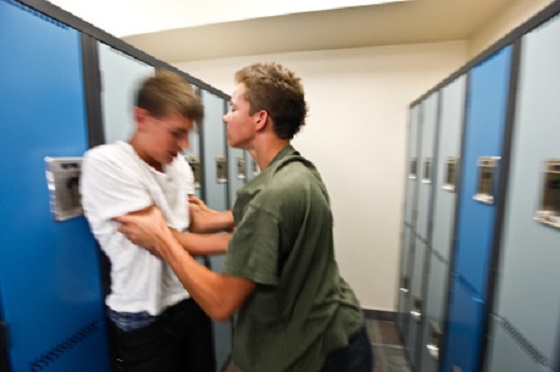
 David Clinton1 day ago
David Clinton1 day agoWhy Are Ontario’s Public Schools So Violent?






